Hello! I'm JJ Pryor, the brain and heart behind Pryor Thoughts, a weekly digest spanning diverse topics — history, psychology, world cuisine, you name it! Each article is a journey, filled with humor, personal anecdotes, and a sense of discovery.
To unlock a world of insightful narratives and become a part of the growing community, just click 'subscribe'. Your support is what keeps these stories flowing.
On the fifth day of the fifth month of the lunar calendar comes Dragon Boat Festival.
I’m sure you’ve heard of it before. It’s where those huge ornate dragons paddle down the water at 14 km/hr to the tune of a drummer sitting on the back of the boat.
The Dragon Boat Festival, known as 端午節 (Duānwǔ Jié) in Chinese, is a vibrant and cherished holiday that has been celebrated in the Sinosphere for centuries.
And while I often avoid overly large crowds (I’m a shy little boy, after all), this year I decided to venture out and see the festivities for myself. Let’s explore a bit of the fun traditions behind the celebration and then go take a walk through the lens of my camera.
What is the Dragon Boat Festival?
There’s a lot of history behind this festival, but I’ll try to keep it a bit succinct.
In modern days, the celebration is known for three main things:
The dragon boat races, which, contrary to popular belief, do not involve actual dragons.
Eating things associated with “five” (because of the fifth day, fifth month thing), especially a delicious little pyramid of sticky bamboo rice called a 粽子 (Zòngzi) or simply rice dumpling in English.
A very ‘unique’ wine I have never personally seen called realgar wine 雄黃酒 (Xiónghuángjiǔ).
To us foreigners, the holiday looks like a joyful time.
Tens of thousands of people descend upon canals, rivers, and lakes to eat, drink, be merry, and celebrate when their favorite dragon boat team wins a race.
But the origins have a bit of a darker story that starts with a man named Qu Yuan almost 2300 years ago.
This chap:
A Quick History of Dragons
Qu Yuan was a poet and statesman in the state of Chu, who was incredibly patriotic and outspoken. But many of the other ministers at the time weren’t too fond of his lyrical genius, and when his king proposed an alliance with their state’s mortal enemies, the Qin state, he spoke up against it.
With the other ministers whispering in the king’s ear about his treachery and disloyalty, he was exiled from his homeland.
During this prolonged exodus, Qu expressed his anger in the only way he knew how—by writing countless renowned poems.
The local populace loved Qu Yuan, and he probably lived among them teaching and poeming and helping their community to a great degree. That is until the Qin kingdom and its warfaring ways eventually conquered the Chu capital.
Qu became a broken man.
He went to the riverside, tied a large rock to his leg, and jumped in.
The local people, distraught and looking to save him, set out in their boats to no avail. But with what little hope they had of saving him, they figured if they covered the water in rice the fish wouldn’t eat poor Qu, thus giving him a chance to survive.
The boats and the rice are thought to be the main inspiration behind the holiday today.
Other Traditions
There’s one other aspect to the fifth month of the lunar calendar—it’s considered incredibly unlucky!
Legend has it, this month is when all the snakes and spiders and creepy poisonous crawlies come out to hunt, pester, and kill as much as they can.
To ward off misfortune, people would place calamus, artemisia, and garlic above their doors, known for their strong smell and shapes that resembled weapons like swords.
And as time wore on, these wards slowly morphed into drinking a potent potable known as realgar wine 雄黃酒 (Xiónghuángjiǔ).
So far, so good right?
But you probably haven’t heard of this wine before.
And that’s probably because it’s made with powdered realgar, a yellow-orange arsenic-based mineral!
Yummy.
Suffice it to say, I haven’t had the pleasure of seeing this wine in real life, nor tasting it. As evidence, I am writing this sentence right now and you are reading it.
Oh, and for the kids who are obviously too young to imbibe in the wine, they used different markings on their foreheads to help protect them from the evil spirits and bugs and creepy crawlers.
Unfortunately for the kids, they used a concoction made from the very same arsenic-based mineral.
Oops.
But why this particular yellowish powder for this festival?
Well, as my Taiwanese friend told me:
“Once upon a time a guy fell in love with a beautiful woman, but a monk told him that she was actually a snake in disguise. The man didn’t believe the monk, so they agreed to try a test. They fooled the woman into drinking the realgar wine and she showed them her snake form after.”
Another story is related to the boat people trying to rescue Qu.
When the villagers rushed to the water to save him, a doctor threw a bunch of realgar wine into the river too. And since snakes don’t like realgar (duh), a giant aquatic dragon emerged from the water which the boatmen killed on the spot.
And that’s why you have the dragon boats, the delicious bamboo rice dumplings, and for centuries until the health authorities cracked down on the substance, the slightly poisonous realgar wine.
But there’s one last thing to this festival.
It’s not a happy one (even if it is celebrated as such).
That same Taiwanese friend of mine got a bit of a chiding for it just this week when she sent some older co-workers a “Happy Dragon Boat Festival!” message.
Rather than saying, “You too!” or “May your dragons glide fast this year!”, these more traditional co-workers scolded her for wishing them a happy time and instead instructed her to wish others to be safe and healthy.
Bah humdragon.
Now that we know all the history of Dragon Boat Festival, let’s go visit it, shall we?
A Trip to Dragon Boat Festival in Taiwan
I set out from my house around 7 pm on the peak day of the festival. It’s a four-day holiday here which means lovely quiet streets during the normally bustling city and ample street traffic at night with smells of bbq stalls and revelry all over the place.
In my neck of the woods of the world, walking down busy streets can be a bit hazardous.
Sidewalks are more of a luxury than a necessity, so walking on the side of the road is often far quicker. Usually, I’ll encounter one or two people walking down the road opposite me and perhaps an awkward parking car or scooter.
Tonight—much to my chagrin—was far different.
There. Were. People. EVERYWHERE.
After a lot of jostling and sighing with my relatively large shape sneaking in and out between hundreds of people and cars, I came to the middle of the festival.
What was there?
EVEN MORE PEOPLE.
For context, this is normally my favorite street at night.
Why?
Because it’s completely empty, it’s a pathway alongside a 5 km canal, and the entire riverside has been transformed into a beautiful scenic walking path.
It normally looks something like this:
And every year for one week, it looks something far closer to this:
And it even comes complete with Dragon-signals!
Which actually look kind of neat when juxtaposed against the bridge.
Luckily being relatively tall with an even higher phone camera-holding ability, I was able to peak over the crowd and snap some shots of one of the dragon boat races.
I’m not sure if the neon LED lights are historically accurate, but if so, no wonder so many electronics are made in Asia these days.
The scales are pretty cool though:
One race was enough for me. It was time to go back into battle in the thick of the crowd.
Because…food!
And a weird concert thingy where a bunch of politicians later went on stage, too.
And, of course, more food!
And more food:
And even more.
That cooking style is something from a local group of people called Hakka, whose ancestors originally came from parts of China. The night markets here often have one or two stalls of traditionally prepared mountain boar.
And if you’re a fan of meat at all—you would love it.
But after all that delicious pork in the summer solstice heat of over 33°C with ~90% humidity, one tends to get a bit thirsty.
And what better choice than fresh watermelon juice?!
Three glasses for $100 NTD (around $3 USD). One hell of a deal!
Then one last look at the dragons:
And back out through the people jungle and off to the bar for the night.
With one quick glance at a temple closing up after the activities, just for good measure in case they’re reading this, too.
And that, my friends, is a visit to one of the largest Dragon Boat Festivals in Taiwan.
Written by a dehydrated but satisfied JJ Pryor.
👋Click the heart thingy? The algorithm loves it. I love it more.👋





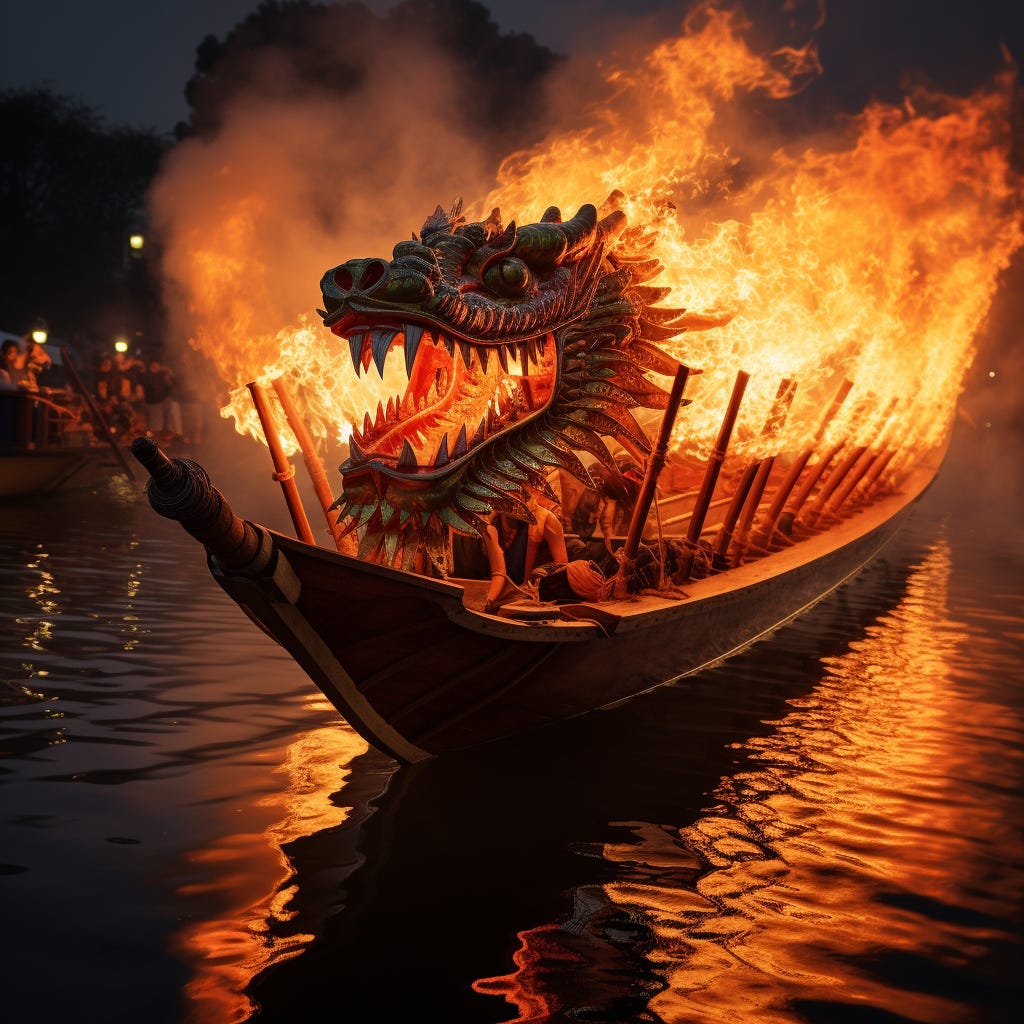
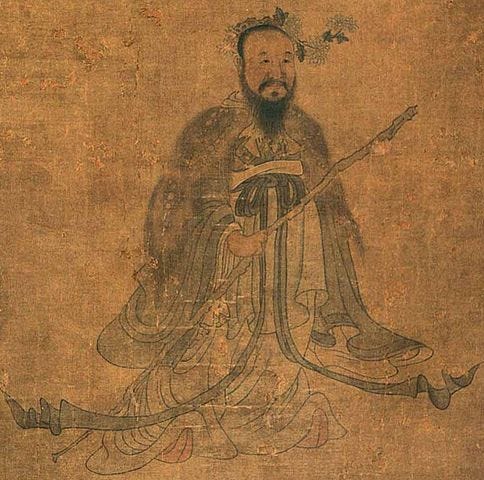
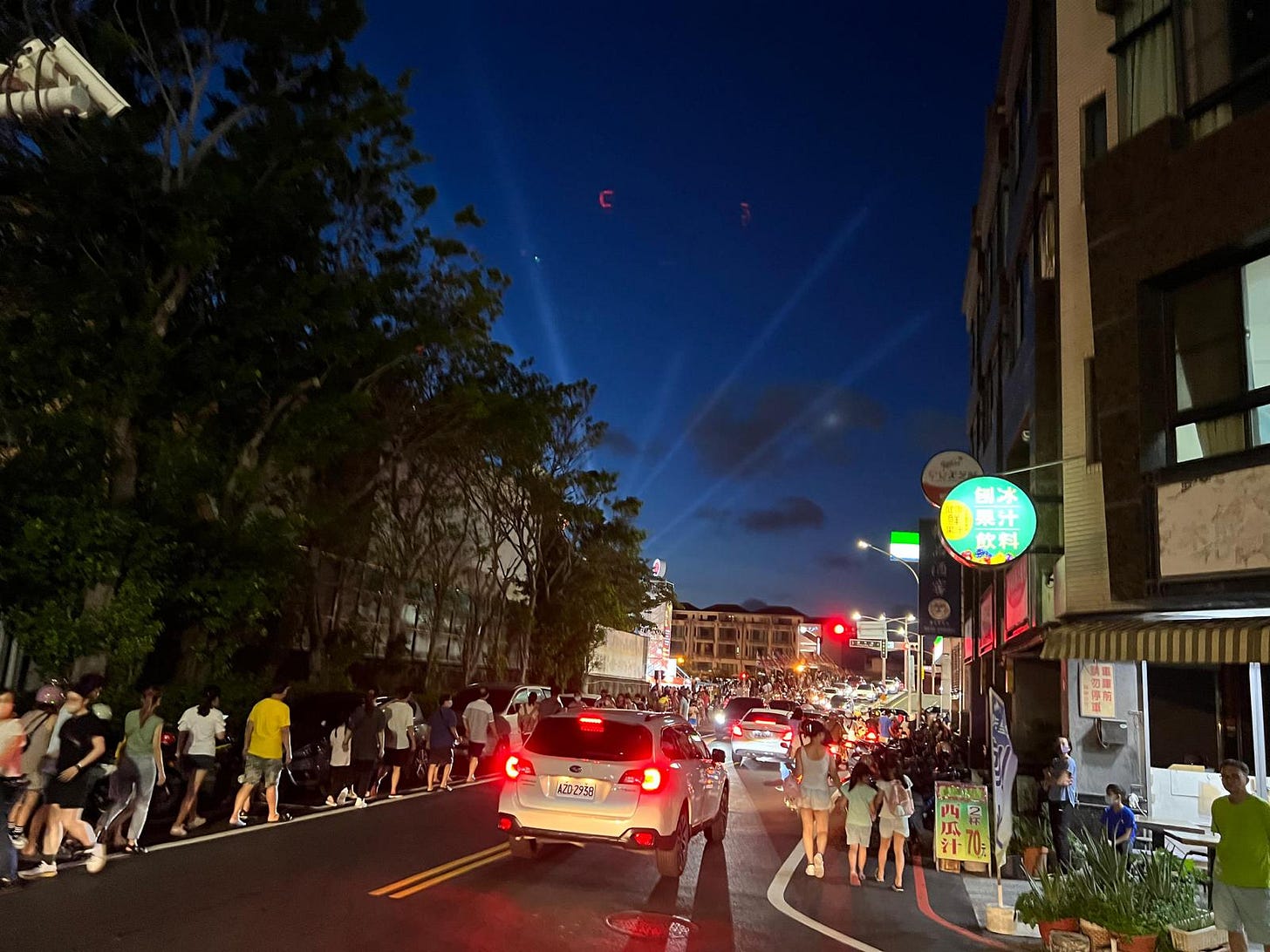
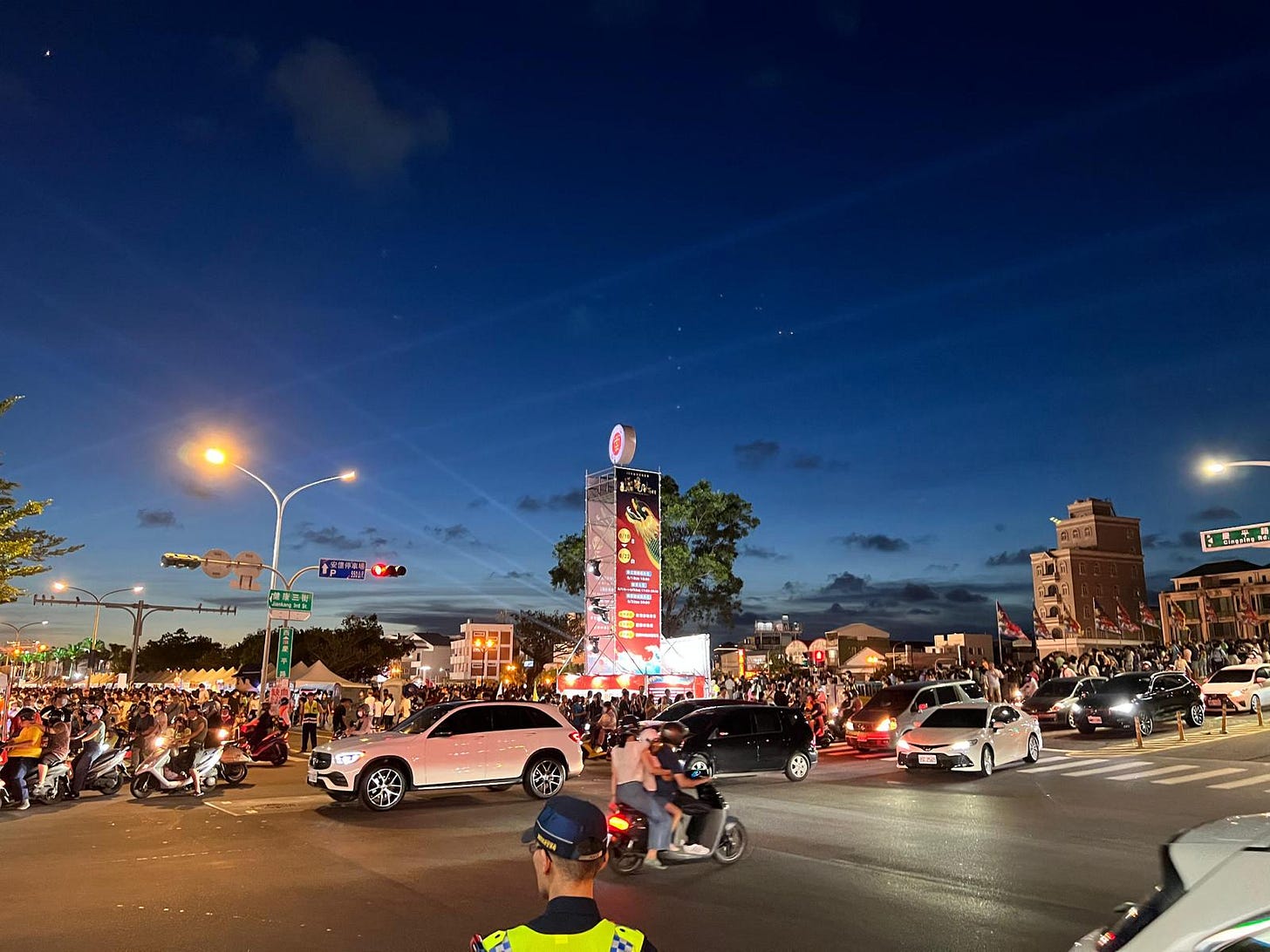
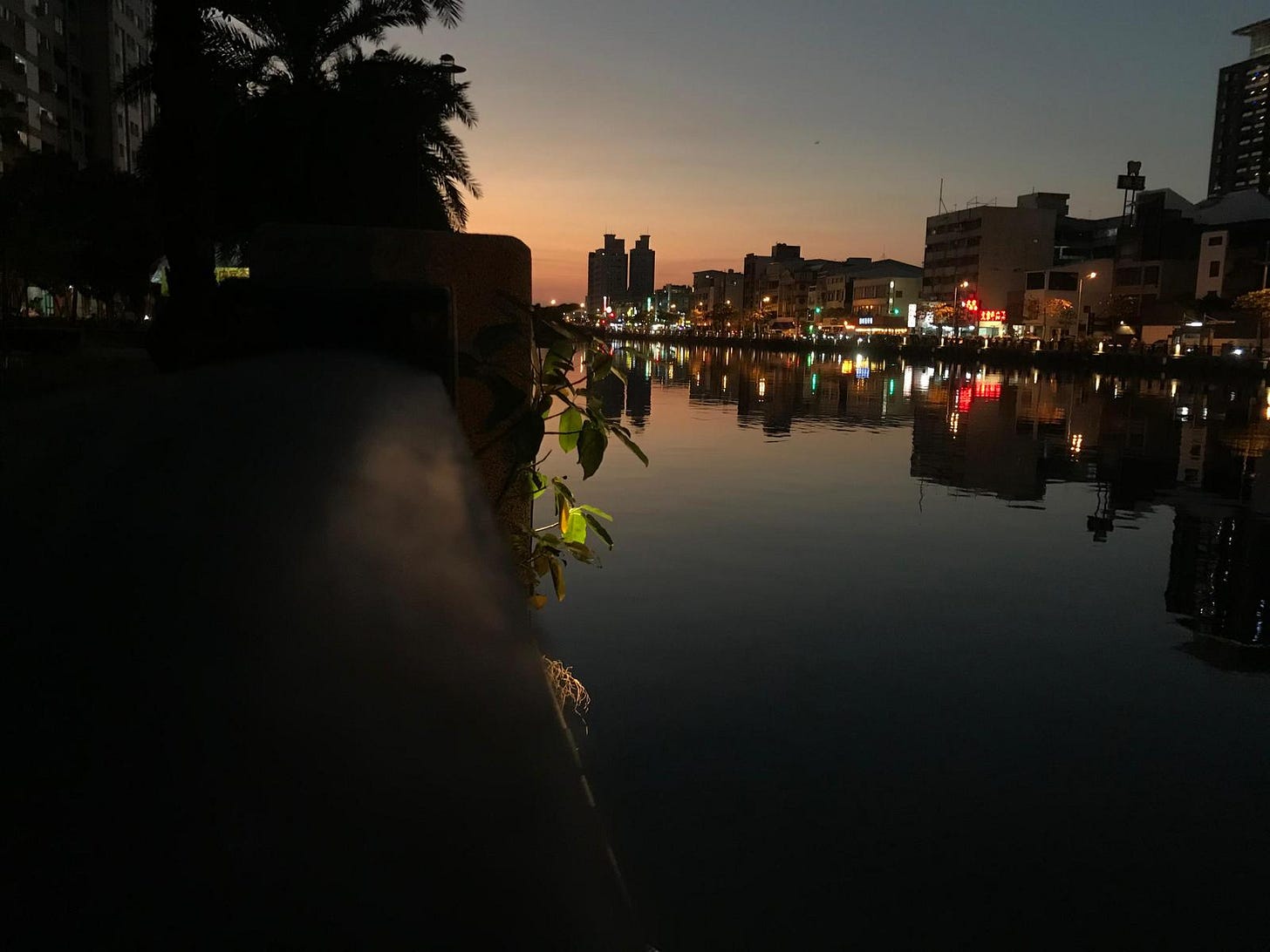
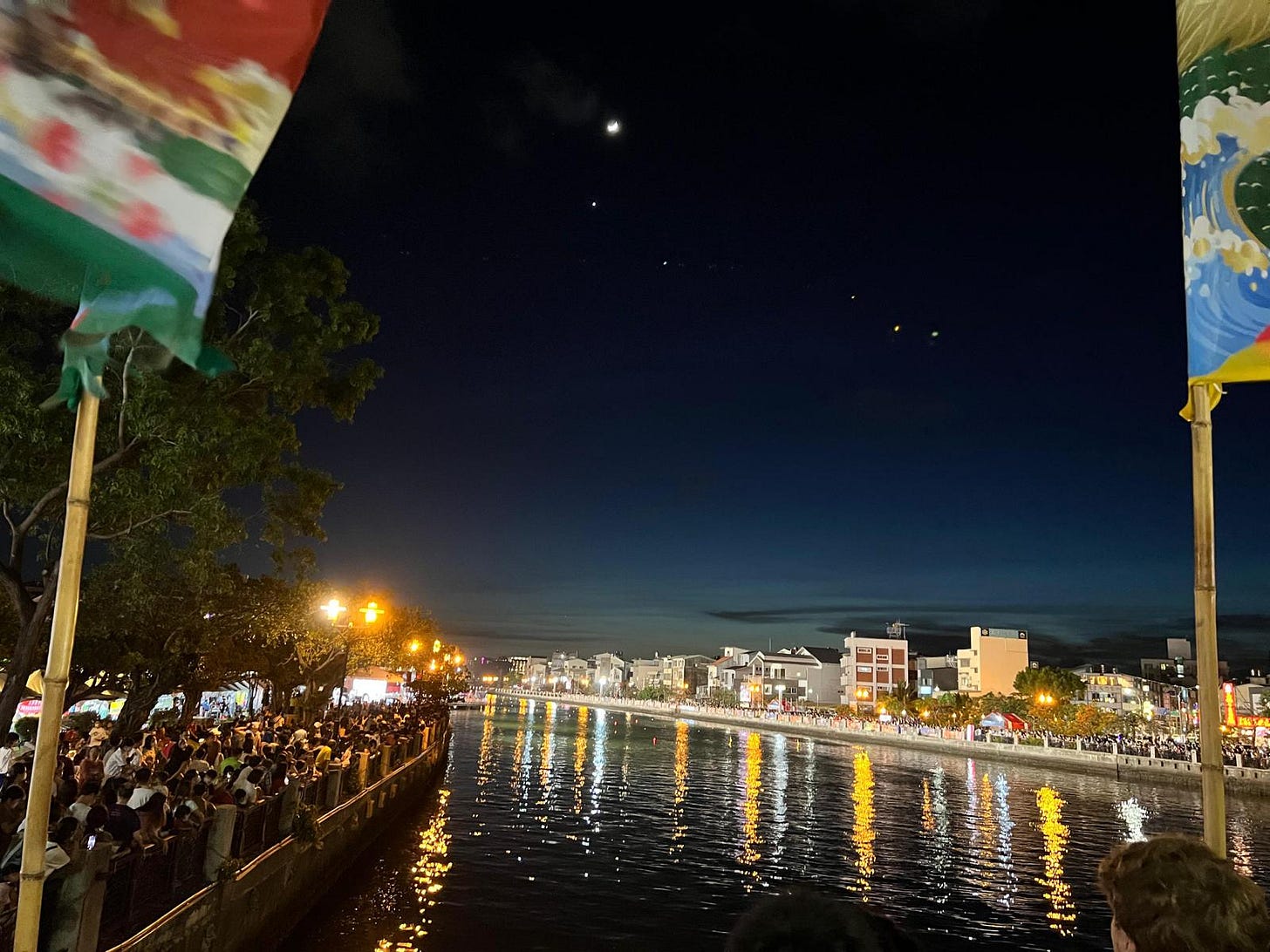
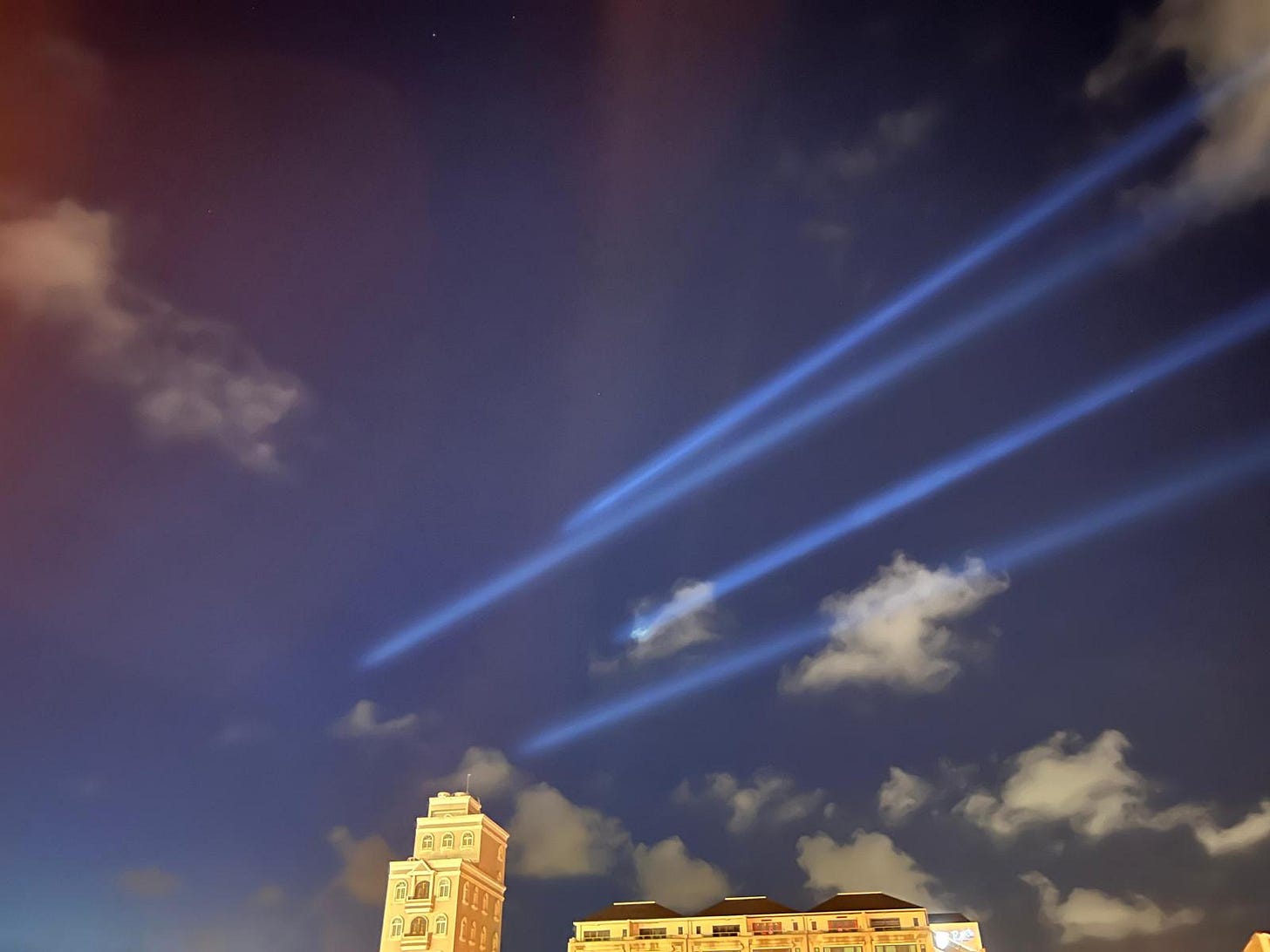
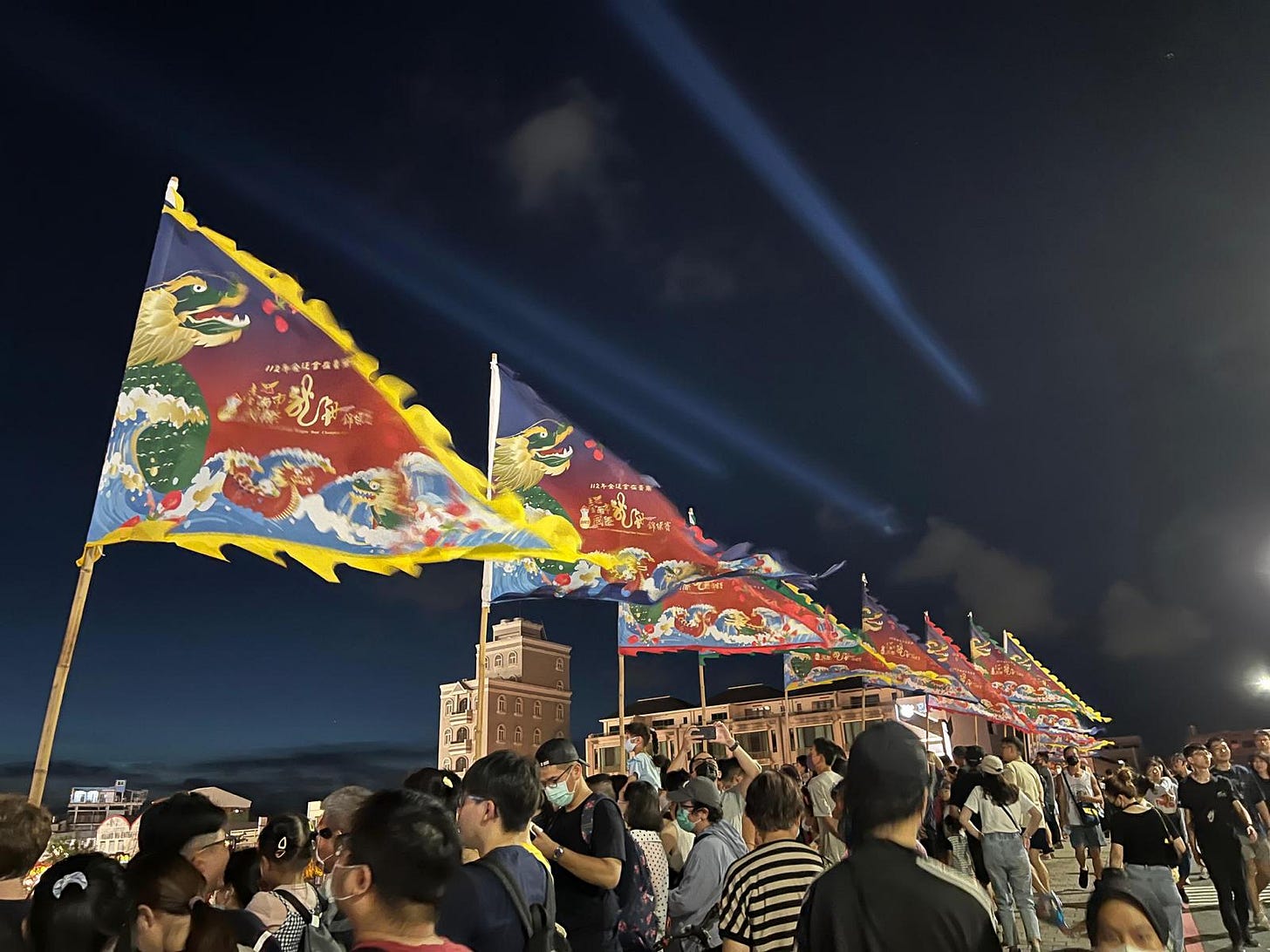
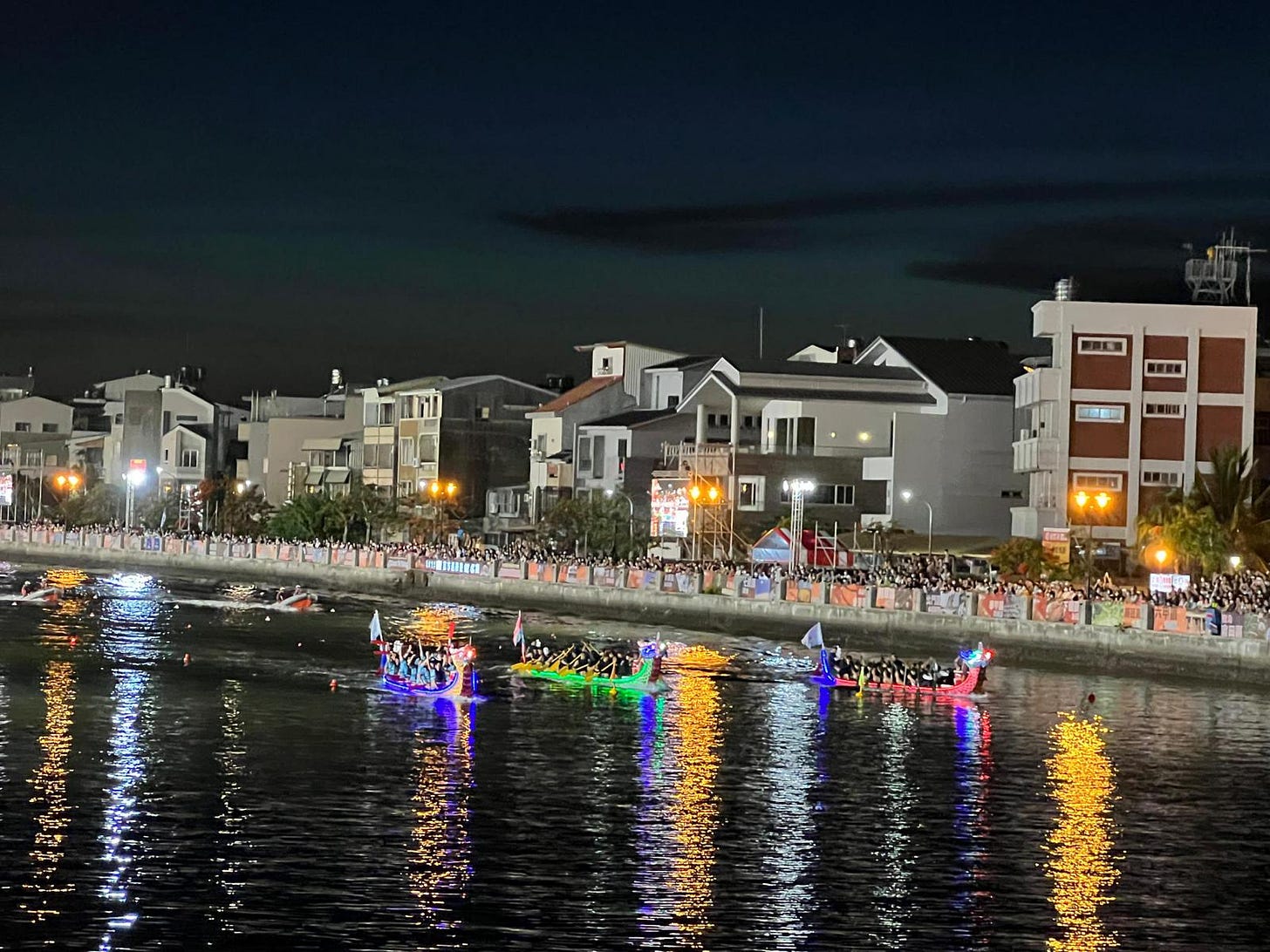

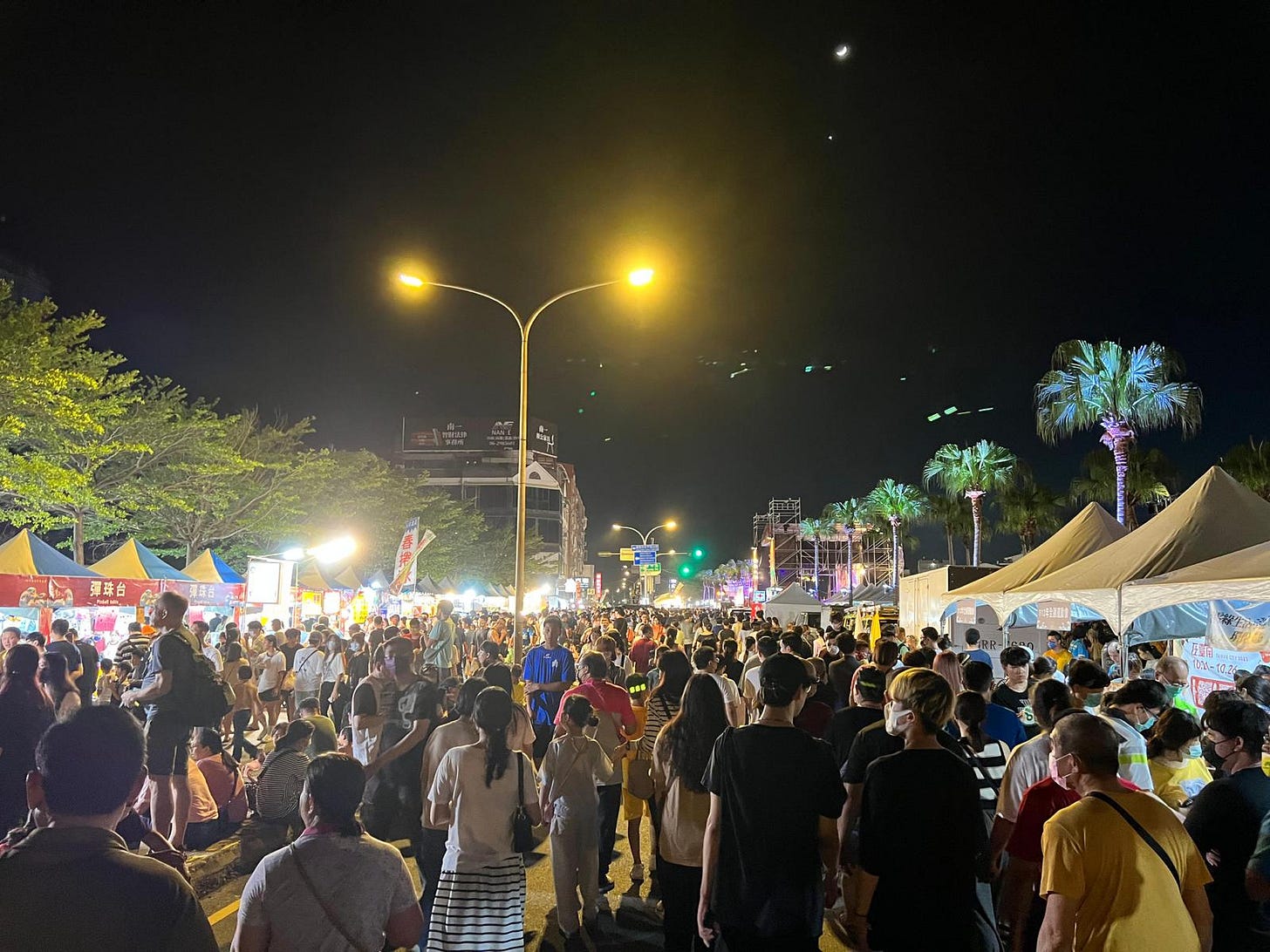
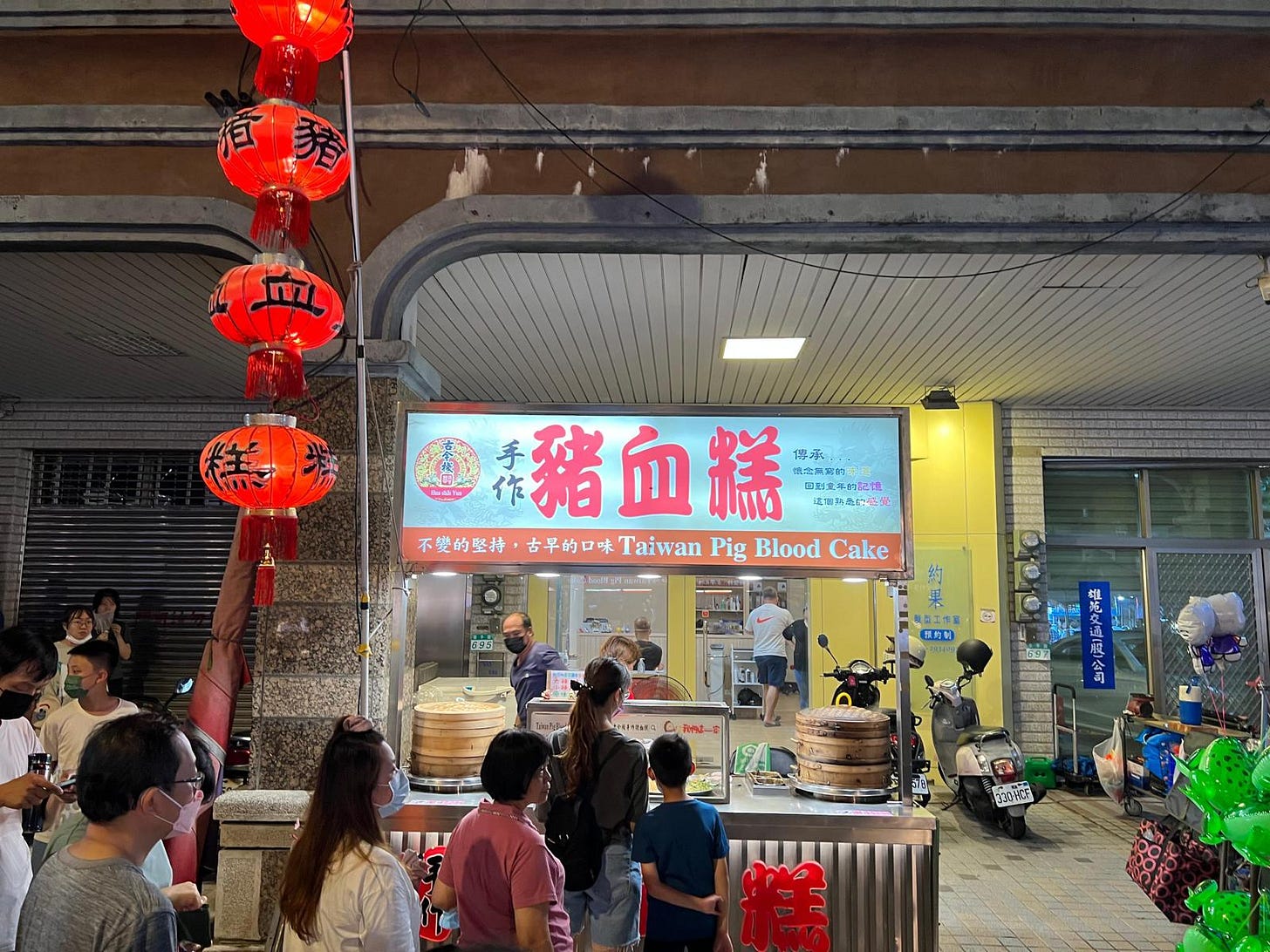
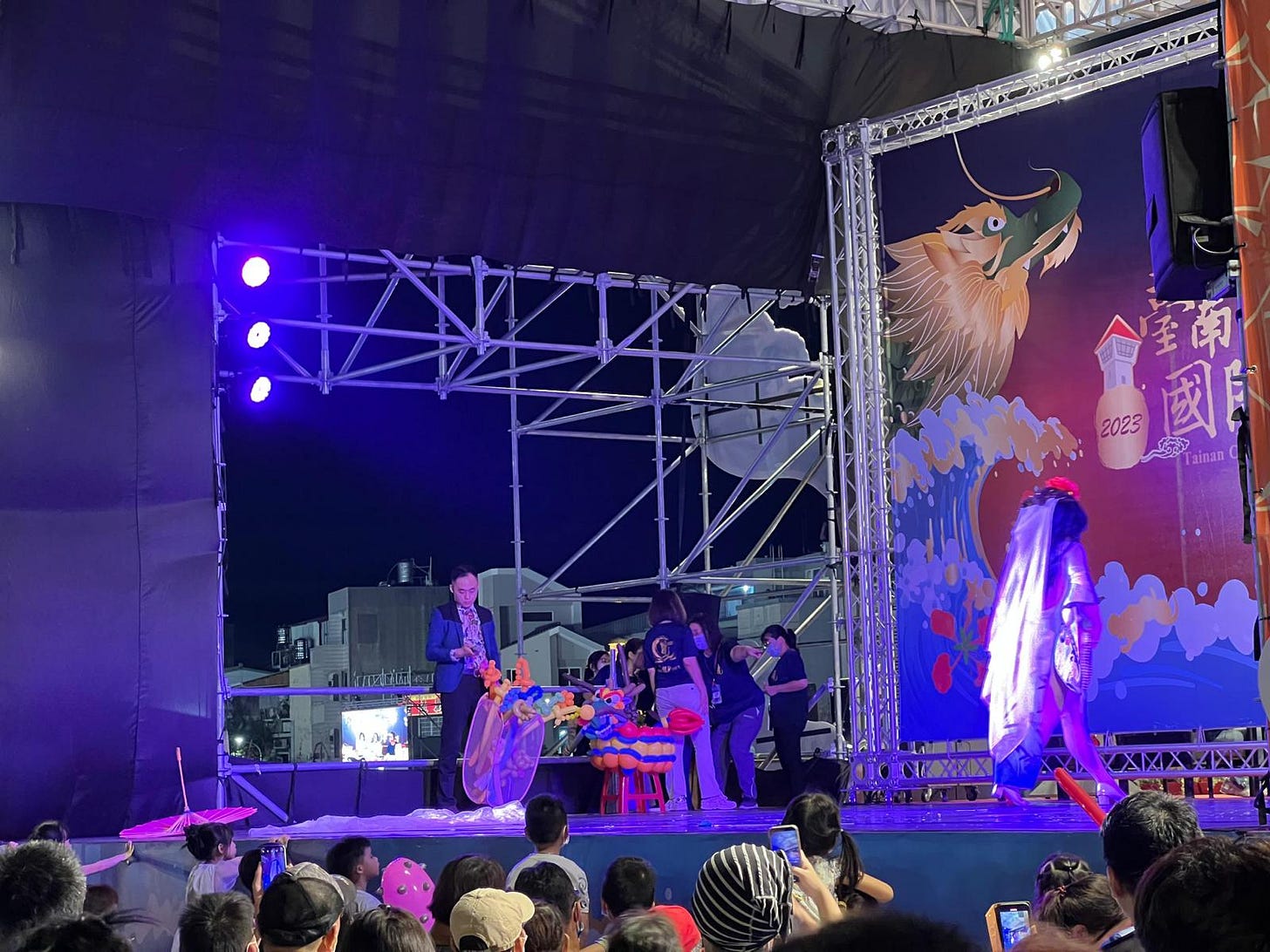
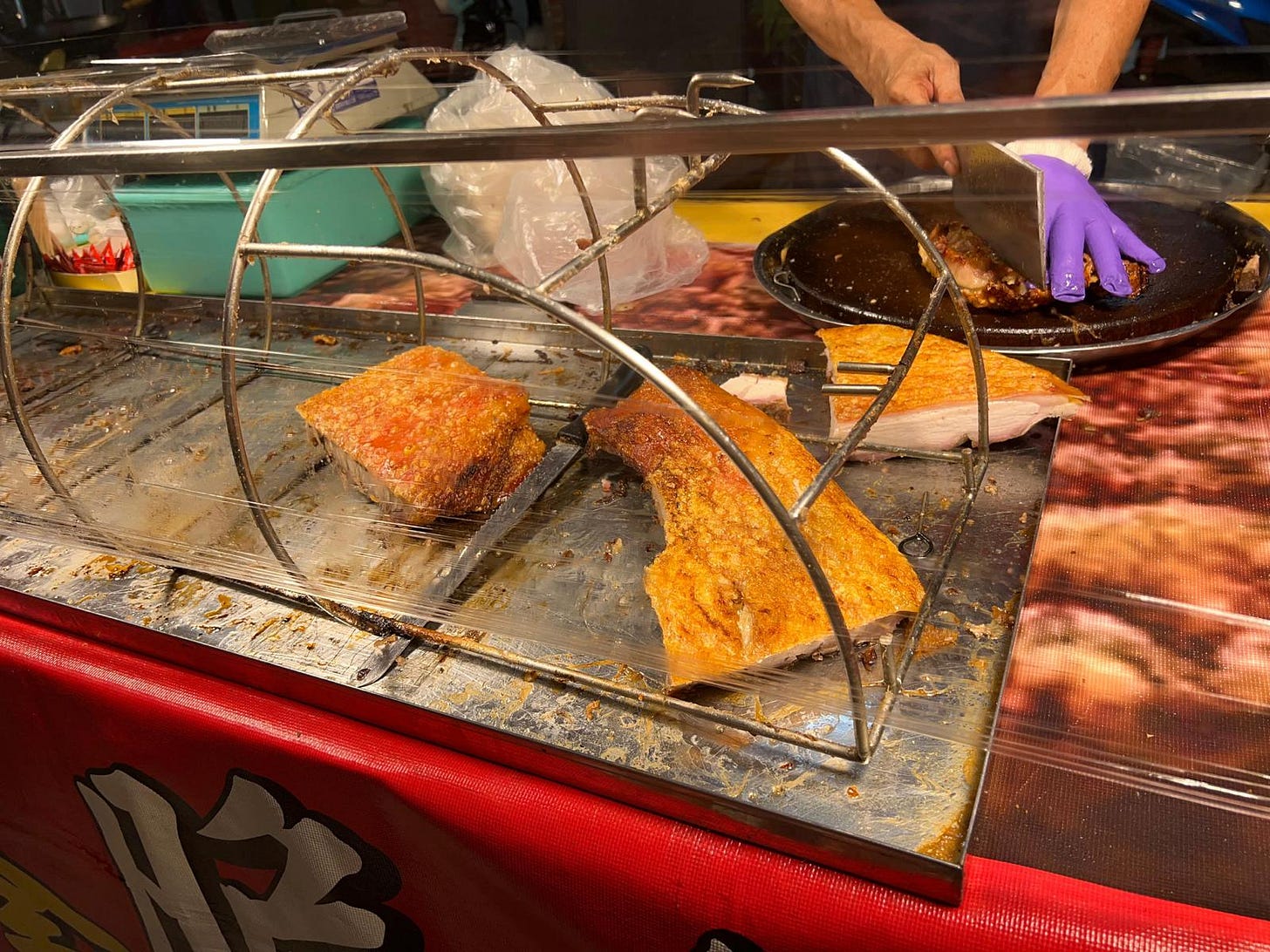
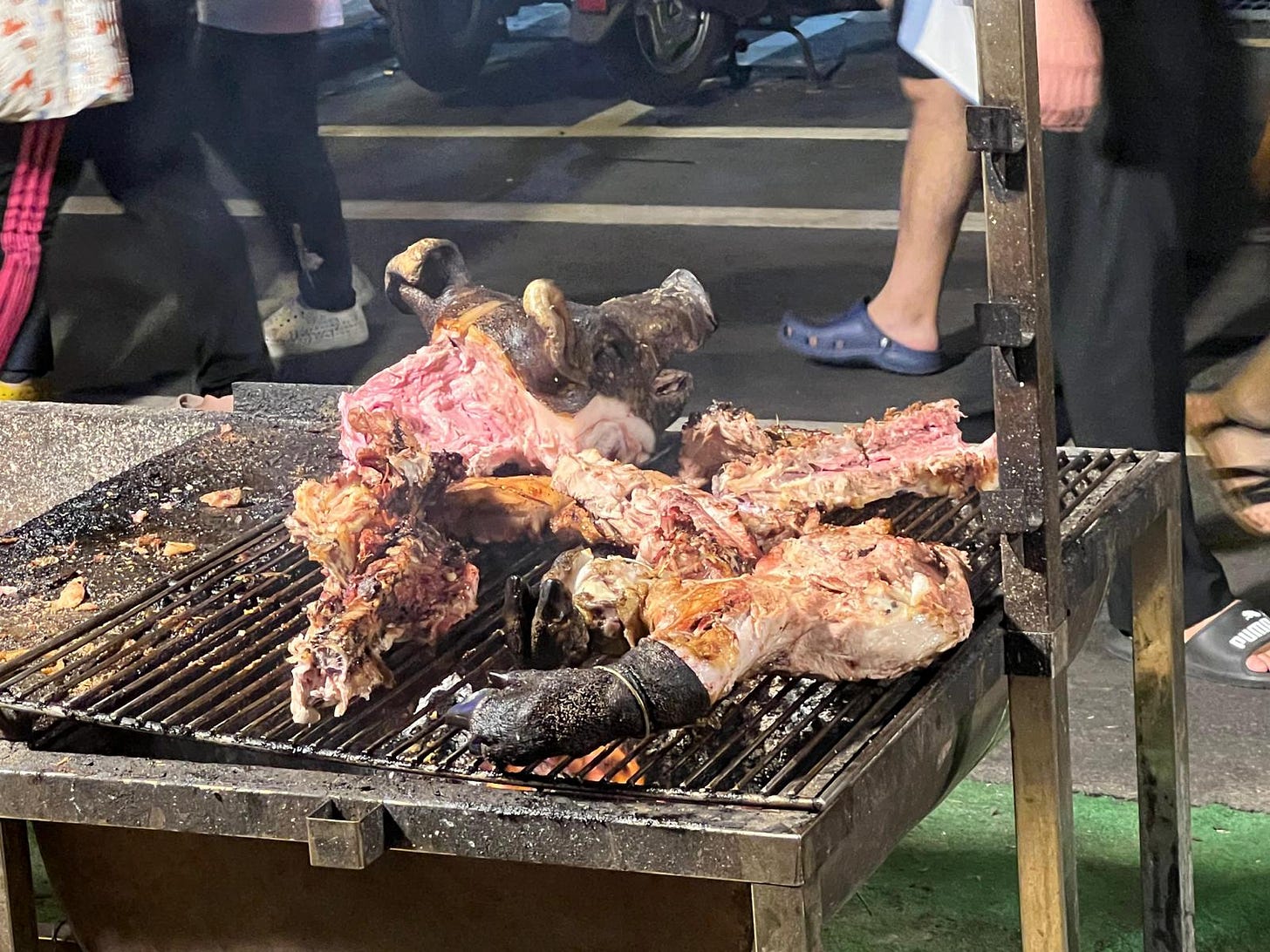
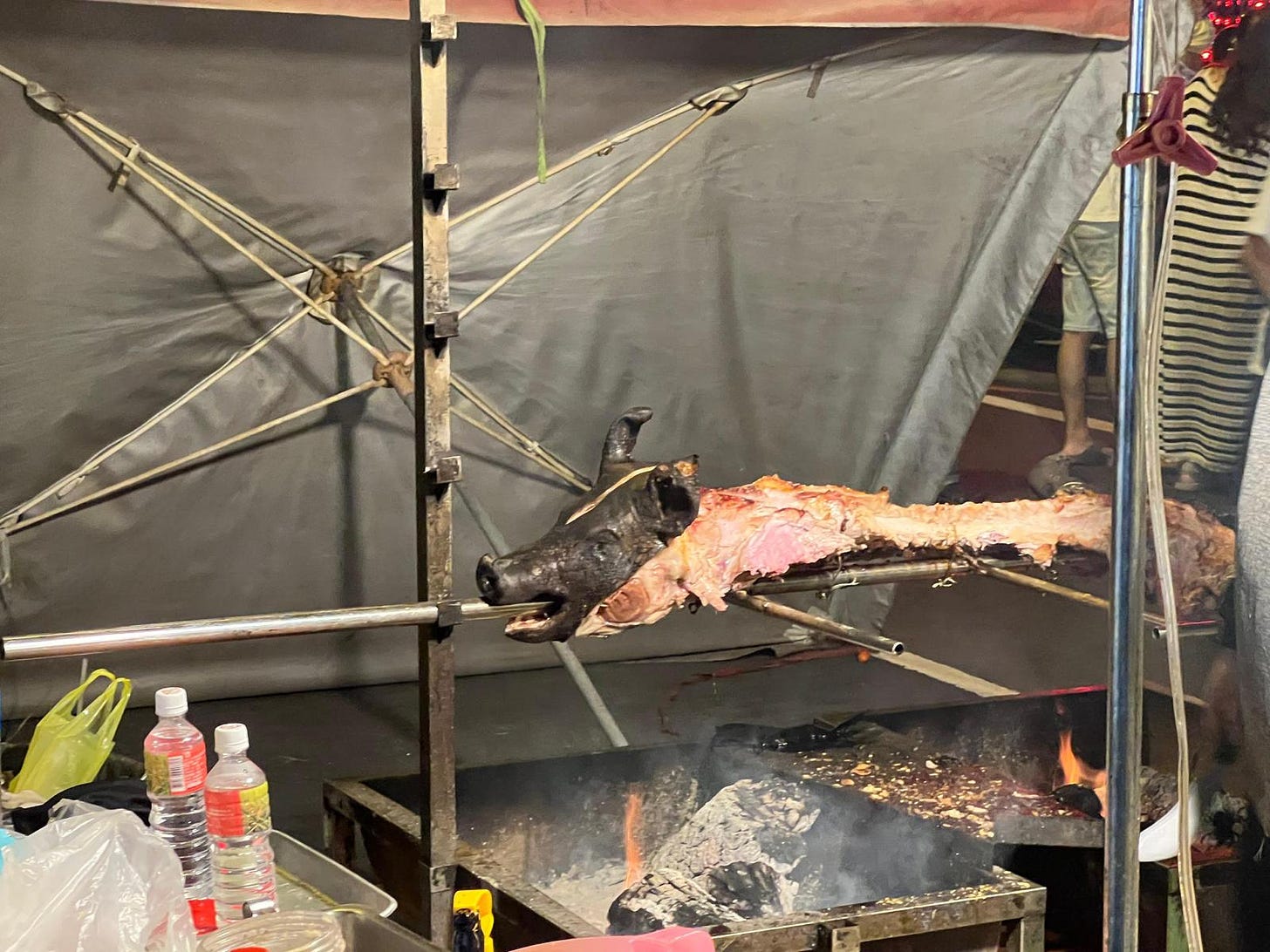
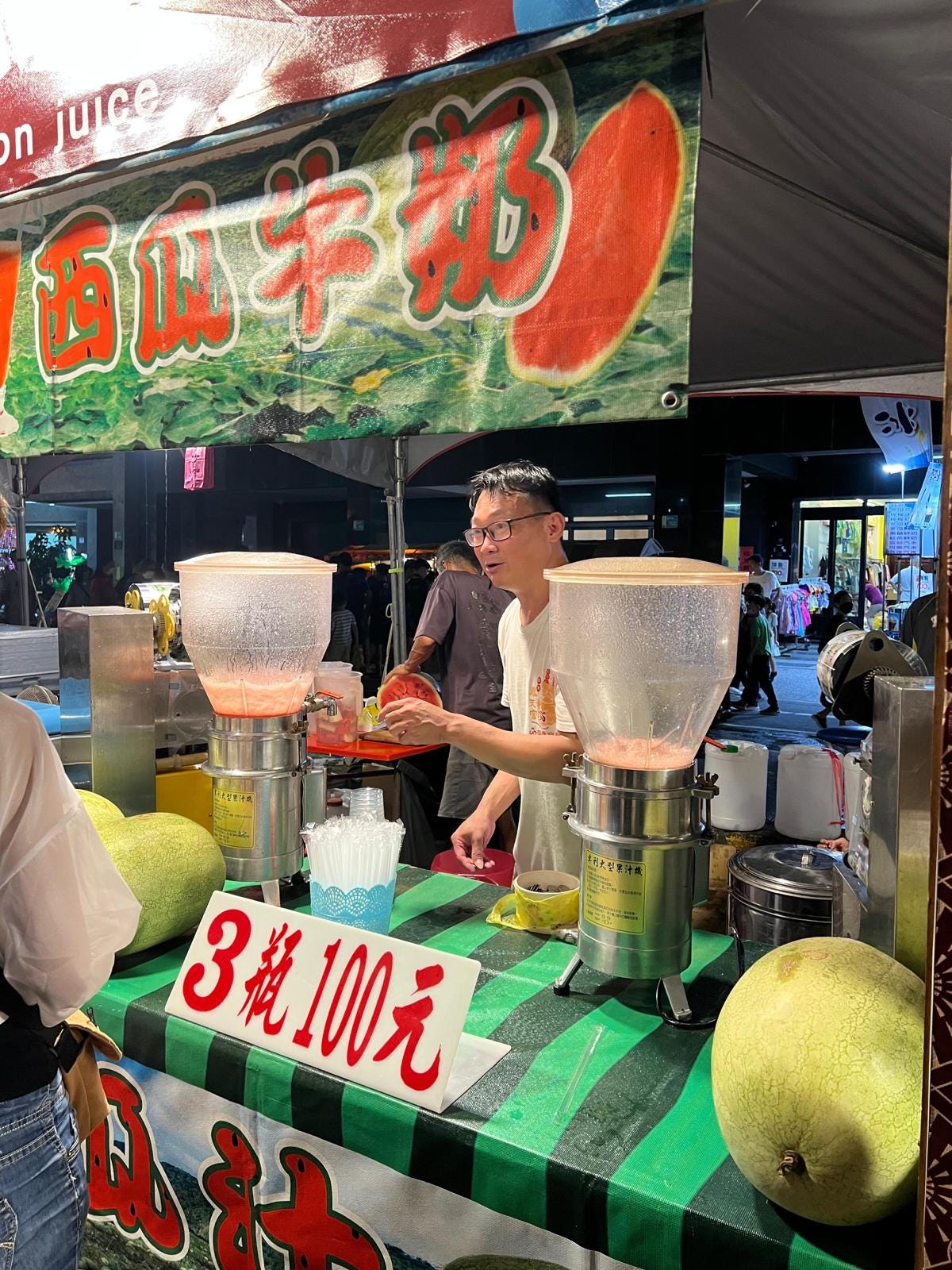
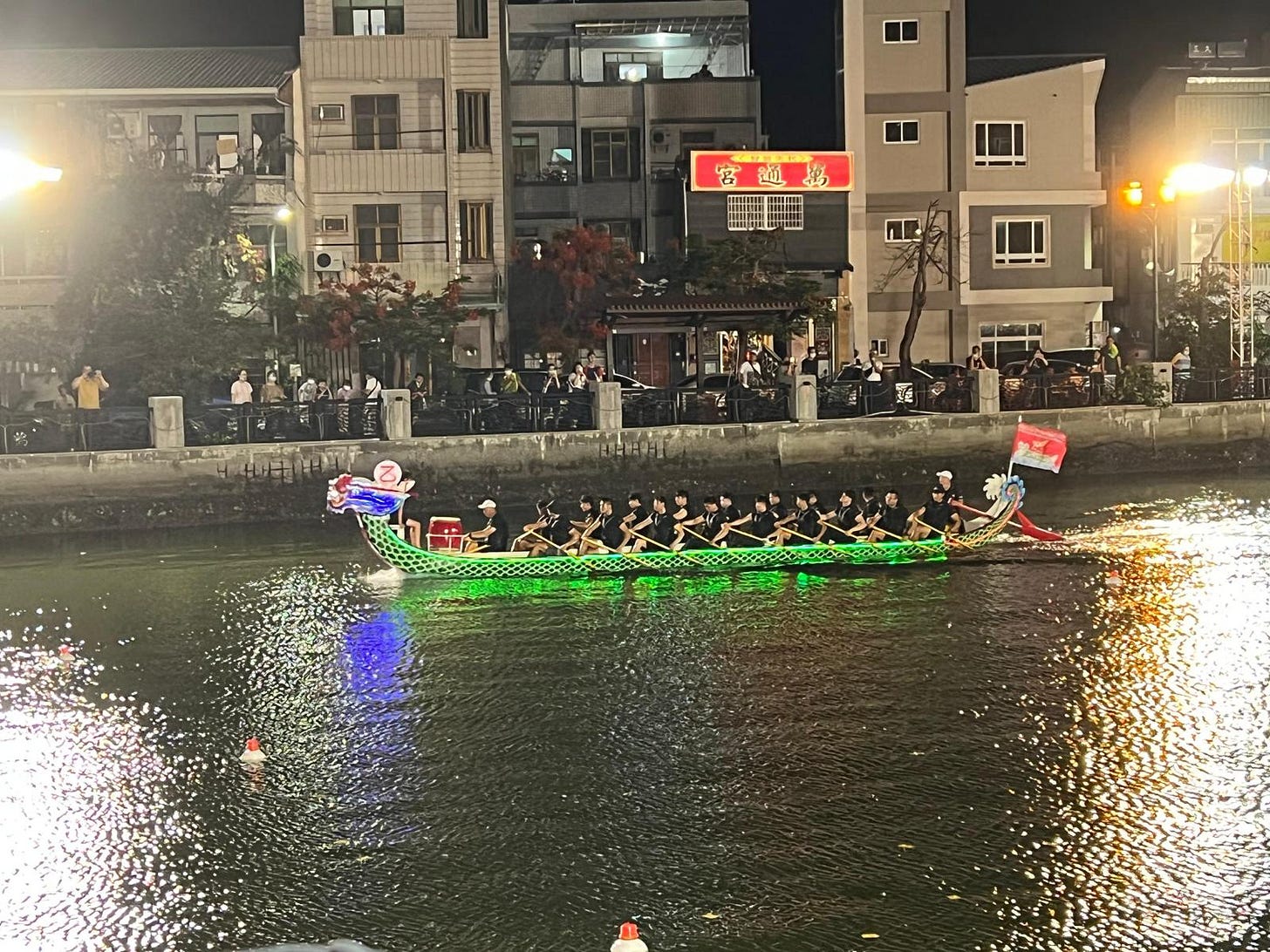
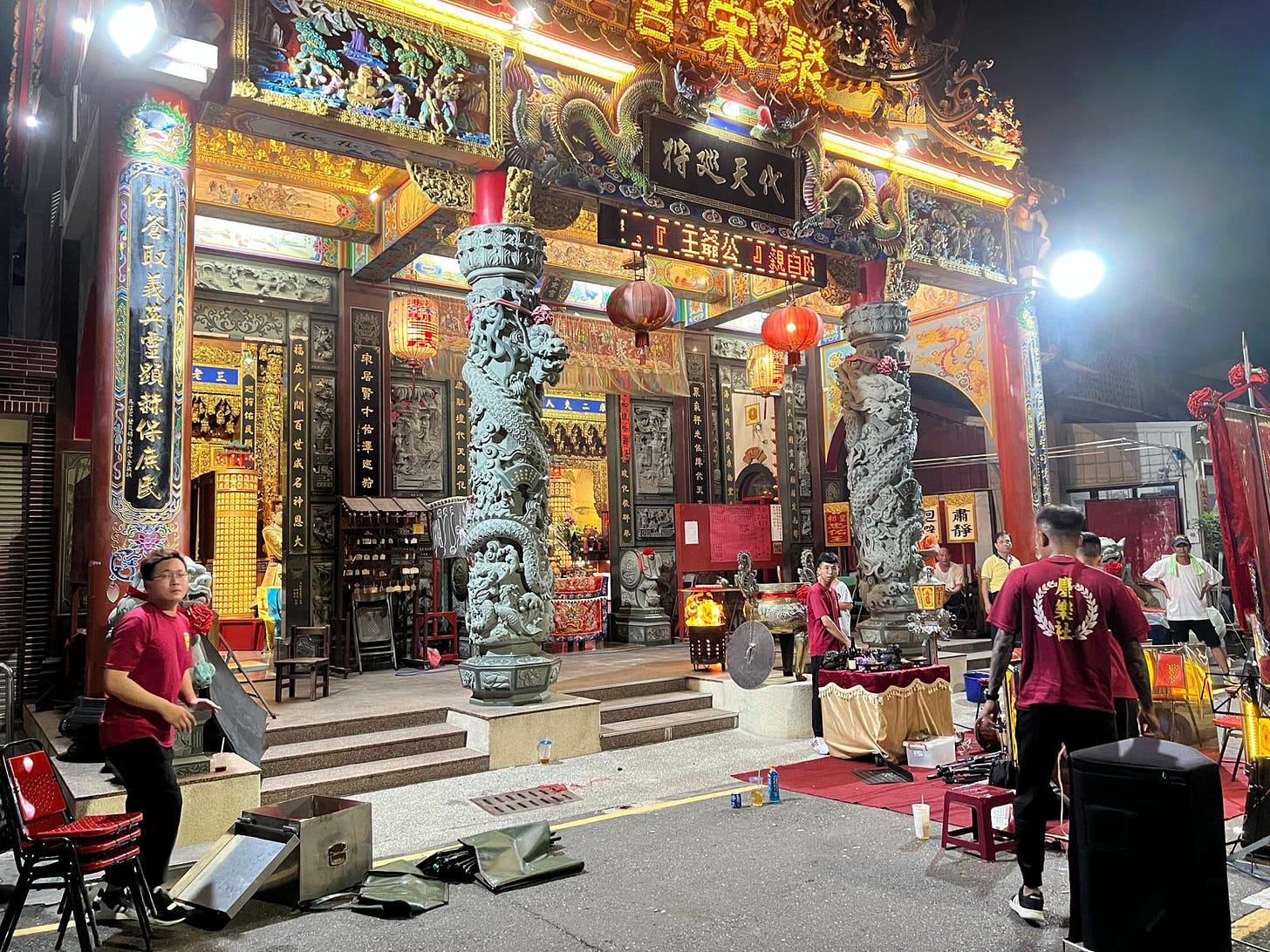
I have a small but important correction to suggest:
> That cooking style is something from a local aboriginal population called Hakka.
The Hakka people are not aboriginal to Taiwan, but are a Han people who are often minorities among other Han people where they live. In contrast, Taiwanese aboriginals are Austronesian, and they speak a language having the same roots as the Malay, Hawai'ians, and the Malagasy (of Madagascar); Taiwan is thought to be one of the earliest places that the Austronesians have continuously inhabited, and from which they migrated across the seas and islands.
Only in China would so much fun stuff be associated with a warning/warding holiday instead of a jolly celebration. Great night photos, anyway.